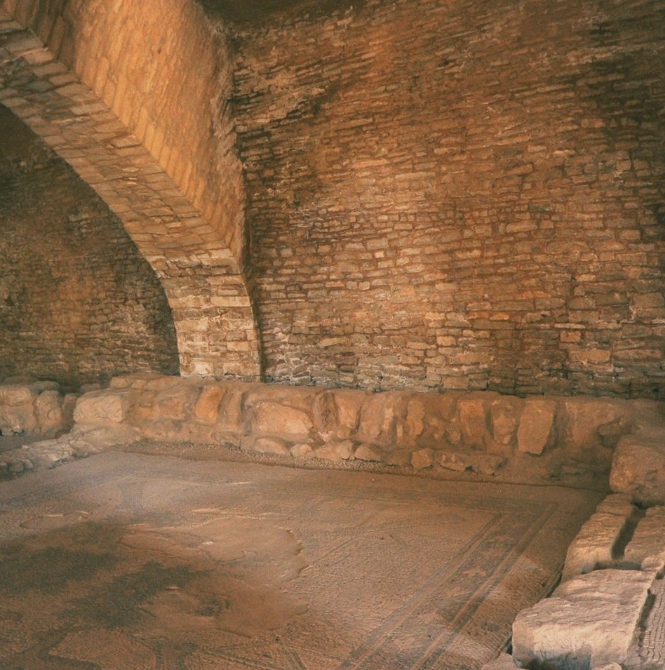
The history of the Church of the Apostles goes back to the year 579 AD and was discovered by Father Giuseppe Manfredi in 1902. The church was built in honor of the holy apostles, and its mosaic floors represent the goddess of the sea and some marine animals, plants and geometric shapes. The floor of this church is one of the largest and well-preserved mosaic floors.

It is an ancient Byzantine church located in the Jordanian city of Madaba, specifically southeast of the historical center of the city, next to the Royal Highway. The church, which was erected in honor of the holy apostles, is one of the most important and oldest churches of the city. It was founded in 579 and was discovered in 1902 by the Italian priest Giuseppe (Joseph) Manfredi, pastor of the Latin Church.
Father Manfredi read the dedication inscription, in which he specified the name of Bishop Sergius and the name of the church and the date of its construction. The inscription says: “During the era of the pious Bishop and Saint Sergius, this church was built in the name of the apostles” (in 579). The church is 23 meters long and 15 meters wide.
The mosaic floor of the Apostles Church is well preserved. It is the work of the artist Salamianos (Suliman), who signed his name in the central mosaic circle in the nave, which embodies the sea as a woman (Thalassa: The Goddess of the Sea for the Greek) emerges from the waters between fish and marine animals. This writing reads: "Lord God, Creator of Heavens and Earth, give life to Anastasius, Tomah, and Theodore. [This is] the work of the Mosaic Salamianos".
In the north of the church, two inscriptions were found saying, "Lord, accept the obsolescence of the fruits given to the Church of the Apostles in commemoration of the priest Hanna and the deacon Anastasius," and then: "This church was built during the reign of the pious monk and Saint John."
The current building that covers the church is designed and implemented by the architect Amar Khamash, who covered the roof of the church and gave it the old and heritage style to fit the church's historical and civilizational status and value. The church's construction is made up of three corridors and two chapels on the northern side. The building was renovated in 1992 with support from the Jordanian Ministry of Tourism and Antiquities and the American Center for Eastern Research.